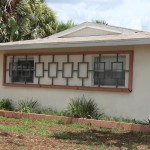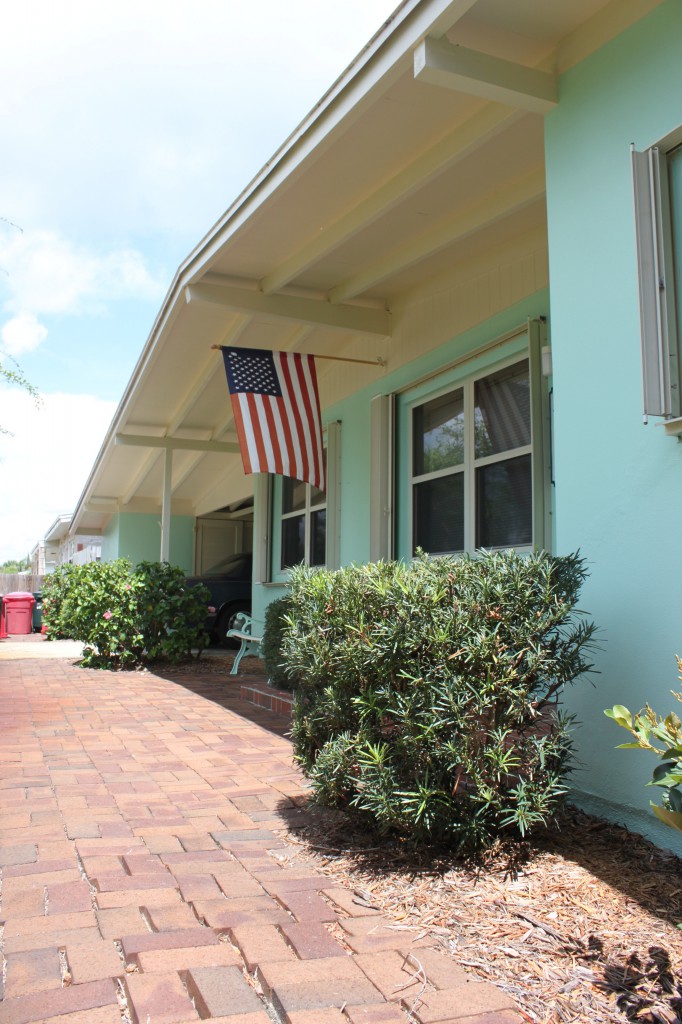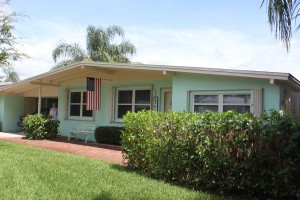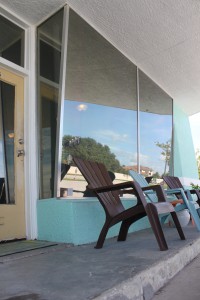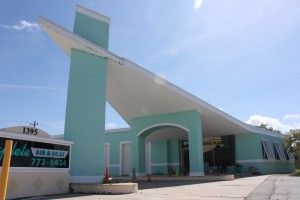BY LESA.LORUSSO ON JULY 23, 2012
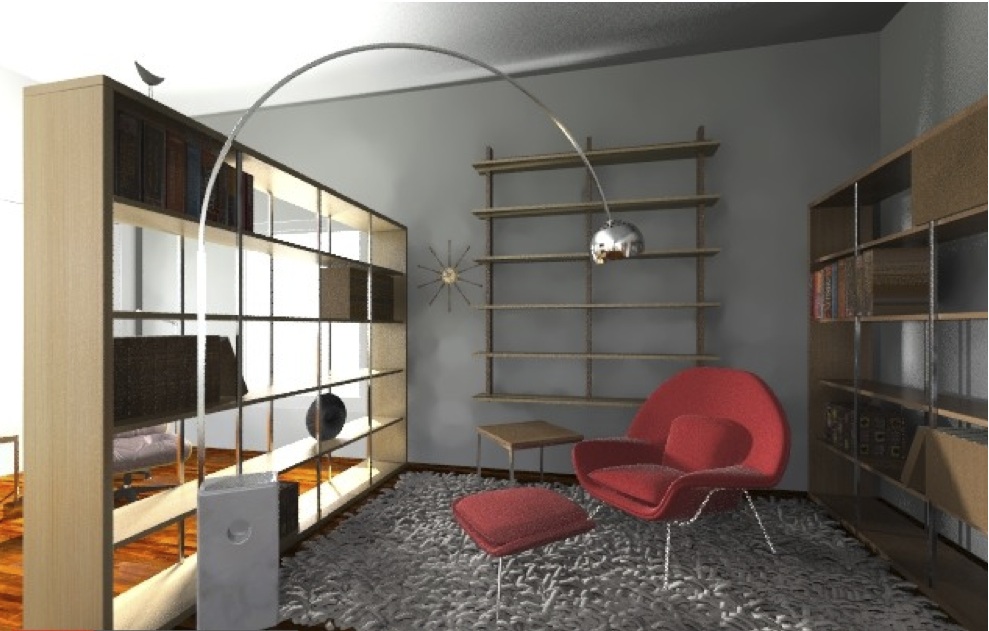 3D rendering drawn by Lesa N. Lorusso with software provided by Design Within Reach and mydeco.com. Pieces include the Womb Chair and Ottoman by Eero Saarinen, Arco Floor lamp, and Nelson Spindle Clock
3D rendering drawn by Lesa N. Lorusso with software provided by Design Within Reach and mydeco.com. Pieces include the Womb Chair and Ottoman by Eero Saarinen, Arco Floor lamp, and Nelson Spindle Clock
The History of the Midcentury Modern Style By Lesa N. Lorusso
One of my favorite architectural styles is now called Mid-century Modern. Although it has been given a fancy new name by design enthusiasts and is enjoying a new found popularity thanks to networks like HGTV and AMC’s Mad Men, this style used to be a mostly overlooked, no-name time period of design that produced fabulously kitschy yard sale finds, and encompassed the harvest gold and avocado green interior of the Brady Bunch’s kitchen. Other common names used for this style are “mod,” “fifties” or “retro.” Often identified by starbursts, a bold use of lines, organic “space age” forms, and materials such as wood, metal, laminate and plastic, it is a style of furniture, product and architectural design that began after World War II and continued through the 1960s. The design style flourished in Europe with designers including Finland’s Eero Saarinen and exploded in America with designers like Charles and Ray Eames, Florence Knoll and George Nelson. (1) What I love most about this style is the bold, innovative use of imaginative forms in architecture and design.
After WWII there was a boom in new technologies. Soldiers returned home, Rosie the Riveter rolled down her sleeves and the “American Dream” went into full effect. Suburbs popped up across the American landscape and architects influenced by the International Style and Bauhaus movements in Europe began using new technologies to create a post war aesthetic. This new attitude in architecture emphasized new building forms and the application of new technology over traditional building types and craft. (2) Brevard County, Florida is an area of the US that experienced these changes directly thanks to its proximity to NASA and Cape Canaveral. Take a drive through communities like Satellite Beach, Florida which is nestled next to Highway A1A between the Atlantic Ocean and intercoastal waterways and you will see neighborhoods built to accommodate men and women at the helm of our country’s technological progress.
As I photographed the architectural details within these neighborhoods I was able to play cultural anthropologist and speak with local residents. The midcentury crafted neighborhoods in Satellite Beach are a combination of both meticulously maintained and sometimes neglected homes. I was delighted to speak with one resident who still lived in the midcentury modern home that she and her husband built in 1960. They relocated to Satellite Beach for employment with RCA, Radio Corporation of America at “the Cape,” and have meticulously maintained their home over the years. Standing on the manicured lawn of the teal colored “mod” home, it was easy to imagine the midcentury neighborhood’s original splendor. I knew RCA by the famous dog and phonograph billboards and was intrigued to learn more about RCA’s role in the space industry. After a little digging, this is what I found. As post-war development of missile weapons progressed, a site became necessary to develop tactics and techniques for guided missile operations, train personnel, test equipment used to operate the missiles and conduct functional and tactical tests of new guided missiles to determine their effectiveness. On May 11, 1949 President Harry S. Truman signed legislation entitled Public Law 60 establishing the Joint Long Range Proving Ground at Cape Canaveral. The Banana River Naval Air Station, which had been transferred from the Navy to the Air Force on September 1, 1948 was renamed the Joint Long Range Proving Ground Base on June 10, 1949. On February 28, 1954 Pan American World Airways signed its own sub-contract with RCA for the technical functions of operating and maintaining the range instrumentation systems. This included missile flight data processing, tracking instrumentation and communication links between the launch sites and downrange tracking stations. (3)


 Images from Design Within Reach, www.dwr.com. Left: Nelson Ball Clock, Center: Eames Molded Plywood Chair, Right: Noguchi Table
Images from Design Within Reach, www.dwr.com. Left: Nelson Ball Clock, Center: Eames Molded Plywood Chair, Right: Noguchi Table
As our nation looked toward the future and accepted a challenge to walk on the moon we accomplished technological strides utilizing NASA and military-inspired innovations. In the design world of architecture and interiors this meant a profound use of new products like laminate, metal and plastics. Plywood and polymers were molded into sculptural furniture pieces as designers sought to bring high-end design aesthetics to the masses.
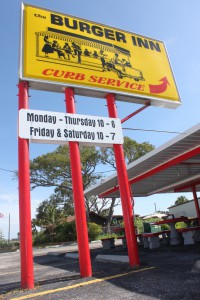
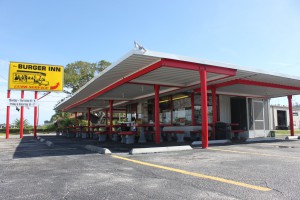
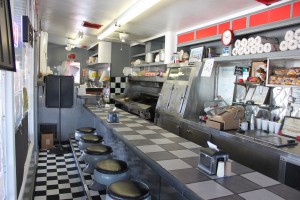 Photos by Lesa N. Lorusso of the Burger Inn, Melbourne, FL. Owner Al Urezzio has recently renovated the circa 1951 restaurant which maintains original fixtures and charm (and boasts a 4.5 star rating on urbanspoon.com)
Photos by Lesa N. Lorusso of the Burger Inn, Melbourne, FL. Owner Al Urezzio has recently renovated the circa 1951 restaurant which maintains original fixtures and charm (and boasts a 4.5 star rating on urbanspoon.com)
The excitement over the end of the war also placed an emphasis on good times and gave birth to the concept of experience-driven entertainment. Mid century crooners like Nat King Cole encouraged Americans to motor west on Route 66, and the concept of marketing vacation travel to the middle class laid the foundation for drive-in movie theaters, roller skating burger joints (like the still functioning Burger Inn located at 1819 N. Harbor City Blvd in Melbourne, FL) and motels across the US.
Photos by Lesa N. Lorusso. This midcentury Phillip’s 66 gas station showcases dramatic lines and starburst design in its concrete portico and is now the home to Complete Air and Heat Inc. on South Patrick Drive in Satellite Beach, FL. The Sign for the Waterway Motel on US1 in Melbourne is a remnant of the marketing push to vacationers driving their way across the US.
Today preservationists across the nation grapple with the difficulties of preserving this modern-era building stock. These structures make up fifty five percent of existing nonresidential buildings in the United States, totaling nearly thirty six billion square feet. The use of materials and reliance on fossil fuels make these buildings a challenge to preserve (2). Buildings older than fifty years are generally eligible for historical consideration. As post WWII structures “come of age” preservationists are striving to come up with ways to preserve the structures while maintaining important sustainable initiatives. Europeans founded DOCOMOMO (Documentation and Conservation of buildings, sites, and neighborhoods of the Modern Movement) in the 1990s, and Americans founded The Recent Past Preservation Network in 2000 to address the needs of these important historical buildings.
Resources:
- http://www.casasugar.com/Mid-Century-Modern-459591
- Ligibel, Ted, Tyler, Ilene, Tyler, Norman. Historic Preservation: An Introduction to Its History, Principles, and Practice (Second Edition). W. W. Norton & Company; (February 4, 2009).
- http://www.spaceline.org/capehistory/

